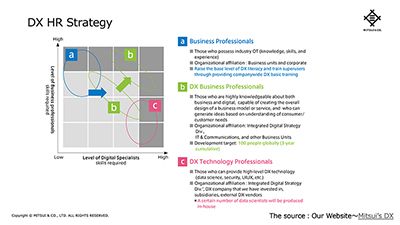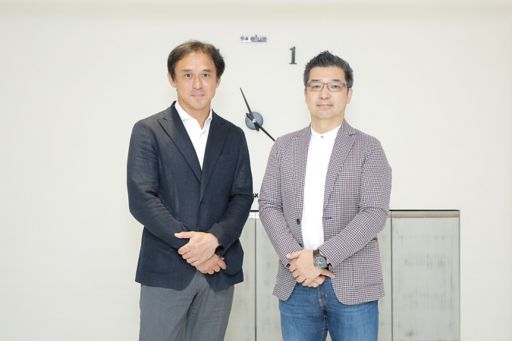”Large companies are the ones that need to seriously work on digital management” --- we hear a lot of similar opinions today, especially after the pandemic. There are companies currently working on this challenge, including those that have already paved their way for transformation.
What kind of path did these companies follow? What kind of future are they seeing? And what are their unwavering fundamentals that can be found? --- In this article, we will introduce the discussions conducted between Yuji Mano of Mitsui & Co., Ltd.’s Integrated Digital Strategy Division and Masayuki Chatani of KPMG Ignition Tokyo.
Contents
- Digital-Driven Management Started with a Breakaway from KKD Management
- How Did Mitsui Overcome “Disbelief” in the Utilization of IT and Data?
- Investments Made for the Future Should Bring Back Returns
- Investment in Human Resources is the Most Difficult One
- Implementation of a Personnel Evaluation System that Prevents DX and AI Experts from Leaving the Company
- Profile of Interviewee
Digital-Driven Management Started with a Breakaway from KKD Management
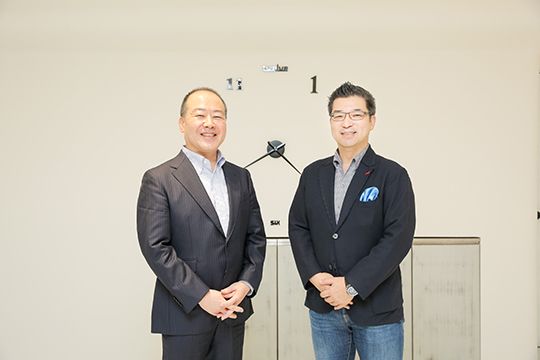
(Yuji Mano, Managing Officer, General Manager of Integrated Digital Strategy Division of Mitsui & Co., Ltd. (left), Masayuki Chatani, Representative Director & CEO of KPMG Ignition Tokyo and CDO of KPMG Japan (right)) *Professional affiliation and official position in the article are at the time of publication.
Chatani: Mitsui & Co., Ltd., is a company with a powerful, established position in the general trading industry. It also has a long history. I have been looking forward to hearing what kind of digital strategies such powerful company has.
First, please tell us about Mitsui’s Digital-Driven Management, particularly the areas that should be transformed to “data driven” and what kind of goals you are visualizing ahead of the transformation.
Mano: Actually, it is still vague in certain aspects. First of all, we are a general trading company, so we have been doing business based on KKD, which stands for “Kan” (instinct), “Keiken” (experience) and “Dokyo” (courage). Right now, we have set our directions by saying “let us change the old practice so that we can adapt to today’s rapidly changing world --- let us start with the very basics --- we shall utilize data to make decisions on everything.” We are now trying to apply this concept to practice.
To this end, we need to make necessary data available, so we decided to start our digital-driven initiative from there. You probably think of a data-driven system to be something that analyzes data in a complex manner and from multifaceted perspectives. But the starting point for us was a step before that. We needed to create data first.
If this step is done correctly, not everyone has to be a data scientist. Instead, people will be making their decisions by thinking logically using the data. This is why I believe the basis is the most important thing above anything else.
Chatani: It is a very important point. When and why did you make that decision?
Mano: That is a very good question. It was in 2008 when I realized that “my company and the management might not be effectively using data or IT in general.”
At the time, I was a member of the business planning team. Of course, our company had an Information Systems team back then, but IS and the management seemed to be going in different directions. I simply wondered why this was the case.
Although I had the desire to bring the management, IT and data closer, I did not know anything about IT or digital matters at that time. But nothing would have changed if I used it as an excuse, so I called on relevant teams in the corporate departments to set up a task force and spent four months discussing our IT and digital situation. The task force then submitted a request in October 2008, stating “we need a new system in order to focus on a better linkage between the management and IT as well as to enable the management to leverage data.” The system established in this process has become the origin of our system today.
How Did Mitsui Overcome “Disbelief” in the Utilization of IT and Data?
Chatani: I assume that there had been perhaps negative feedback during the time prior to engaging relevant people and ultimately setting up the system. How was the actual situation like?
Mano: All the people, including management and staff members in different departments, did not have a concrete image of IT or data utilization at that time.
Looking further back, there had been an attempt to utilize data in 2003, which ended up in a failure. During 2002–03, there had been a concept called “Global Management Cockpit” in which managerial decisions were made based on data and information displayed on the cockpit. However, it failed. It was a system that showed data on a dashboard, but no one used it.
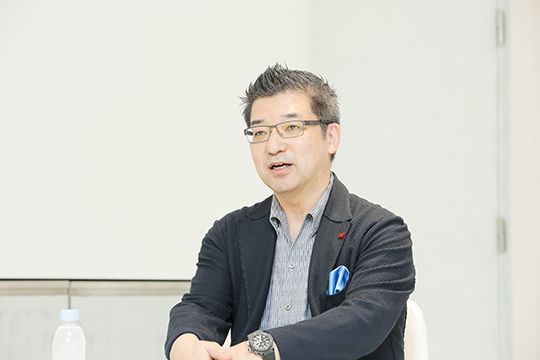
The reason for the failure was because we collected any data we had on hand and created the dashboard without any idea of how those data would be utilized. Since then, this kind of concept disappeared for a long time. This experience probably made our employees to keep distance from the idea of utilizing IT and data.
In this sense, even today, I can’t deny that there are still some people who would react and say “what is the use of collecting data?” if I propose the idea of data utilization.
Chatani: I’ve heard many similar stories, but from my perspective, Mitsui seems to have successfully steered its way toward IT and data utilization. What is the major factor that contributed to this?
Mano: As I have previously mentioned, in 2008, we took an important step in setting up a formal system at the organizational level by making it clear that the management will engage in decision-making on IT.
With this background, we had organized the Information Strategy Committee in January 2009. This is an advisory body of the corporate management committee. We have been ensuring to agree on the idea and awareness that any decisions made in the committee are the management’s decision which had been made based on discussions by participating senior management and heads of business units as well as key corporate managers. This endorsement enabled us to execute various actions smoothly.
Before this step, Information Systems determined and executed actions on their own, sometimes making people outside of IS react repulsively, sometimes voicing “who gave IS the right to do and say those things?” It was a major turning point for us when we established a structure that engages the top management where actions are executed based on the management’s decision. This is working effectively to date.
So, our system had been set up, but we had a long way to go in terms of changing the mindset of people on the organizational level.
Investments Made for the Future Should Bring Back Returns
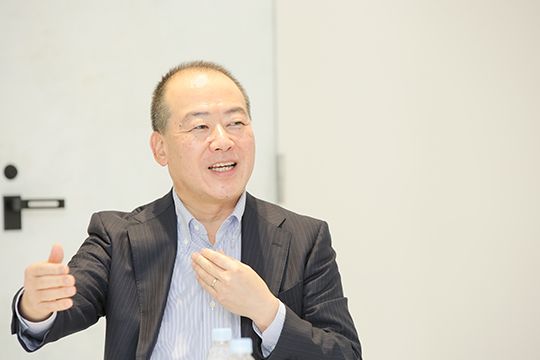
Chatani: After listening to your story, I can now see that the foundation had been solidly established in the organization. Still, it is easy to imagine how difficult it must have been to determine the size of investment and the number of people to be deployed.
It is a future-oriented initiative that had never been implemented and there were not many companies in similar industry/business that took an action as drastic as the one taken by Mitsui more than a decade ago. I wouldn’t be surprised if people reacted negatively to something that had no precedent. Despite all of these, what approach did you use to determine how much to invest, etc., in order to proceed with the project?
Mano: What I am going to say applies not only to DX, but there is no doubt that the rational way of making individual investment decisions is to follow the investment decision code.
What helped me in making the decision on the idea I had mentioned earlier was again the thinking fostered by the Information Strategy Committee, which clearly presented the idea that “IT, information systems and data are all investments that need to bring in returns.”
Until then, many people considered IT and data utilization initiatives as “costs” thus falling into the thinking that “they should be dropped because of their high costs” without any logical reasoning. Instead, if we present it as “investments that generate this much return if you invest this much”, people would consider it as an investment just like other investments in general, which is more likely to be accepted.
In other words, if you can’t show them the returns, people will judge that “it is not worth the investments.” At any rate, the most important thing is that we had been able to show our people returns by helping them perceive the initiative as an “investment.”
Investment in Human Resources is the Most Difficult One
Chatani: Let’s elaborate on details of investments. You need to examine not only IT systems but also how to allocate right people in the right place. At Mitsui, how do you secure and develop digital talent?
Mano: First, our DX Comprehensive Strategy has three parts: (1) DX Business Strategy, (2) Data-Driven Management Strategy and (3) DX Human Resource Strategy.
For our employees, I wanted to present the talent profiles expected for DX Human Resource Strategy as simply as possible. To do so, we had defined the vertical axis as the business professional level and the horizontal axis as the digital specialist level so that people can discuss them within this coordinate system (refer to the image below "DX HR Strategy").
When you look at this system, you can see that majority of Mitsui’s personnel is found in “a” area, designated as Business Professionals who are knowledgeable about business but not in the digital area. On the other hand, our affiliates, namely, Mitsui Knowledge Industry (MKI) and Mitsui Bussan Secure Directions (MBSD), a company that is known for their cybersecurity, have people who fall into category c, designated as DX Technology Professionals, who are also referred to as top experts.
At first, I was planning to work with people in the categories a and c only, but after a few attempts, I learned that it was difficult. This led to a conclusion that we need to develop category b talent and have an in-house development system.
In other words, we have focused on category b or DX Business Professionals by defining them as talent who are knowledgeable on both business and digital and have the capacity to become a project manager or product manager.
Of these DX Business Professionals, we refer to people with an expertise level to become a DX project leader as “project manager” (b on the bottom left) and those capable of operating a new service/product as business on their own as “product manager” (b on the top right). To fulfill our corporate responsibility to develop these talents, we had launched the in-house development system with the development target of 100 “b” people in 3 years. This year marks the second year of this initiative.
Implementation of a Personnel Evaluation System that Prevents DX and AI Experts from Leaving the Company
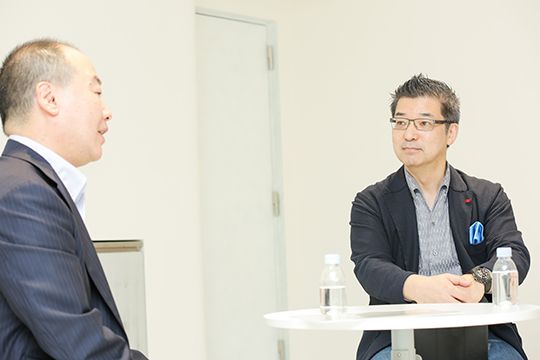
Chatani: Presenting defined goals clearly like this helps people see where they should be headed and makes it easy for them to work on the initiative. Can you be more specific on the talent development process?
Mano: We have “Mitsui DX Academy” as our in-house people training system. It consists of three parts. First, employees receive skills training. Next, they work on the actual projects in real settings in a program called “boot camp.” Lastly, we send them to executive education programs as we believe that people learn faster in the US/European academy if they want to learn the latest technologies.
Together with this curriculum, we believe that the most important thing is to set up a certification system for the aforementioned talents from a to c. When we analyzed the reason why DX/AI experts leave their jobs, we suspected that it is because they feel they are not getting the credit they deserve from the company or their skills are not recognized. To address this, we decided to officially certify these individuals’ skills as a company.
October 1 was our first certification approval day for b talent. When we certify someone as b talent, the person gains confidence for being certified and it opens up opportunities for them to become a project leader of various projects.
We had also reviewed our hiring issues. The issue here is “recognition.” People who earned their master’s degree or PhD in AI and other latest technologies generally don’t even think about seeking employment in general trading companies.
So, we’ve decided to actively promote that “Mitsui Co., Ltd. is the place where people like you can demonstrate your expertise.” One of those initiatives is DX internship that was rolled out in March 2021. When we announced that “if you are studying AI at a master’s degree level or above, you are welcomed to participate in our business competition”, we had received more than 100 entries for 20 openings. Majority of candidates had a master’s degree or PhD and were able talents with passion.
Since we could not shortlist applicants to 20, we had accepted 29 candidates. We believe that more than 29 people have now recognized where we are heading to. You might ask “how many of those candidates have actually joined the company?” In June 2021, many DX interns officially applied to us. Most of the candidates to whom the company had extended job offers have decided to join us. Thus, we have been able to recruit a talent pool drastically different from the previous years.
The business competition takes place in Japan, but we are looking to increase new hires from overseas, which has also become our focus area. At present, we are seeing increasing number of candidates from Singapore.
Chatani: Do you mean you are hiring locally in Singapore?
Mano: Yes, we have hired a person with experience in DX in the Singaporean Government and talent who had overseen DX in a Singaporean company.
Profile of Interviewee
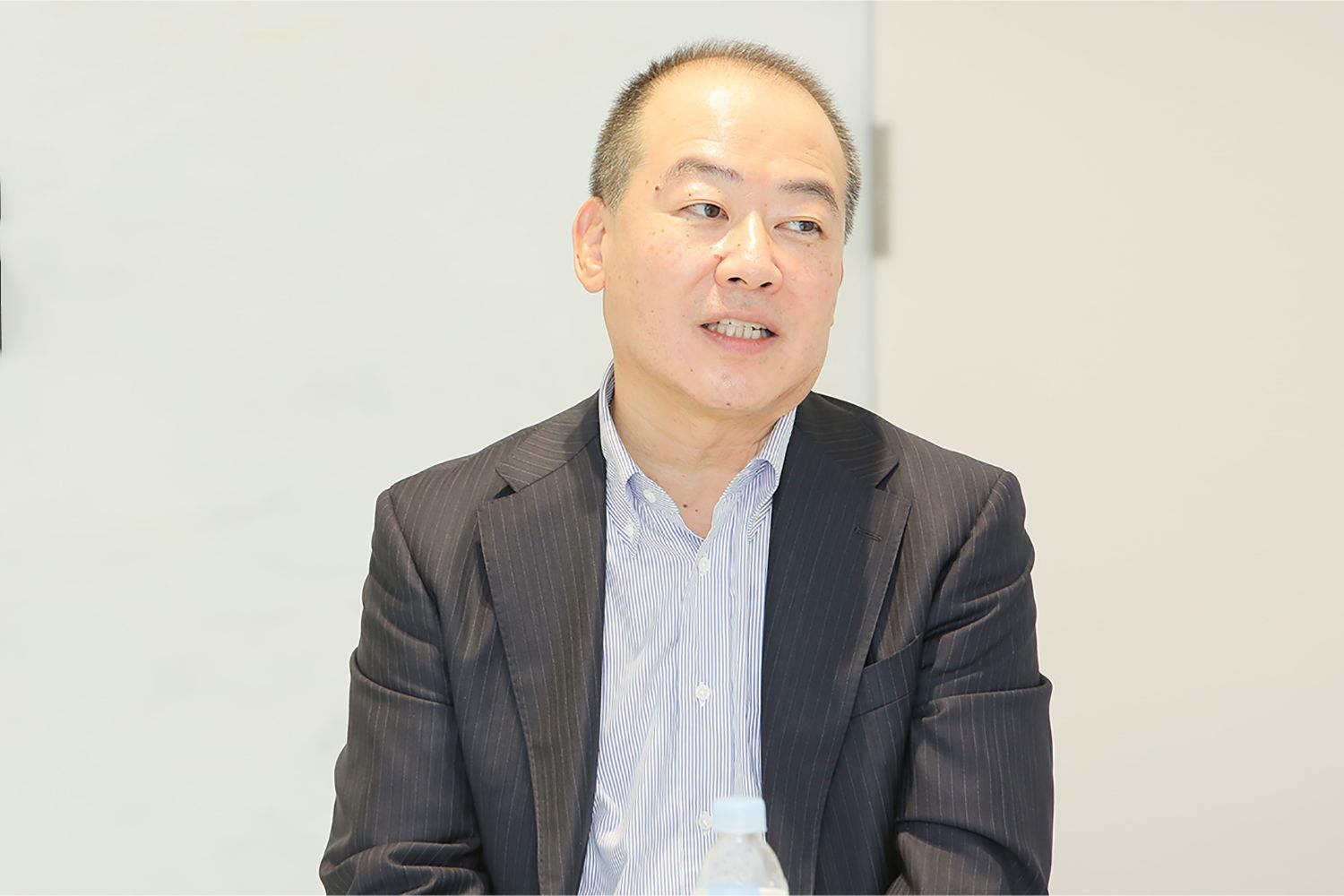
Yuji Mano
Managing Officer, General Manager of Integrated Digital Strategy Division
Mitsui & Co., Ltd.
Yuji Mano joined Mitsui & Co. in 1986, and was engaged in chemical sales in Japan and the United States, then transferred to Corporate Planning & Strategy Div., formed the company-wide Information Strategy Task Force in 2008 and served as the leader, and he became the first General Manager of the Information Strategy Planning Dept. in 2009. After that, he served as General Manager of Chemical Business Development Div., CAO of Mitsui Americas, and then General Manager of IR Div. in 2016. He became a managing officer in April 2019 and was General Manager of IT Promotion Div. in June of the same year. He advocated the integration of DX and IT in business strategy, and became General Manager of Integrated Digital Strategy Div., which was established as the integration of two organization in October, 2019. After that, all DX / IT related organizations that had been dispersed throughout the company were also integrated to carry out large-scale organizational restructuring, which resulted in establishment of the current Integrated Digital Strategy Div. He formulated "DX Comprehensive Strategy" and promoted digital transformation, data-driven management and DX human resources strategy for the entire Mitsui & Co. Group.
Follow us on KPMG Ignition Tokyo LinkedIn for the latest news.
Connect with us
- Find office locations kpmg.findOfficeLocations
- kpmg.emailUs
- Social media @ KPMG kpmg.socialMedia



